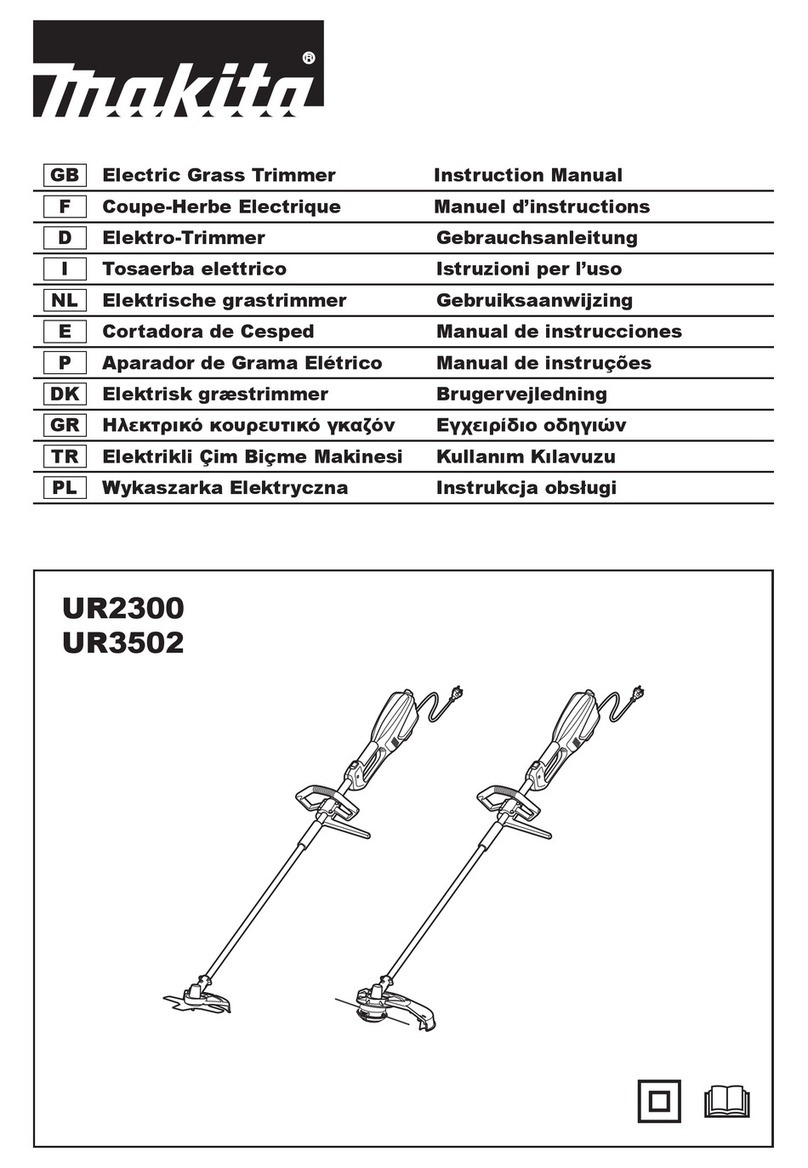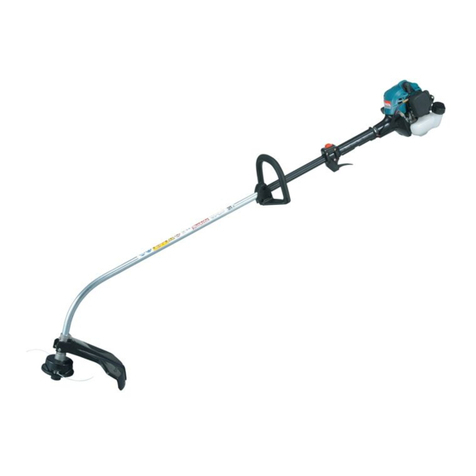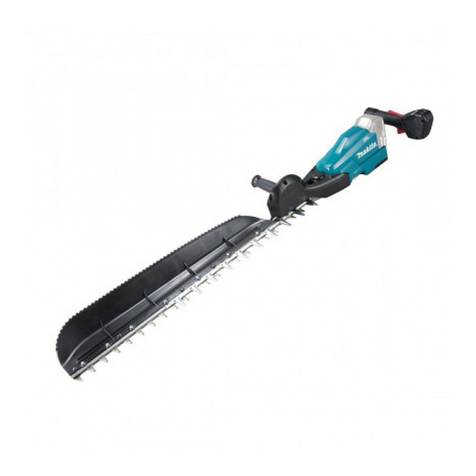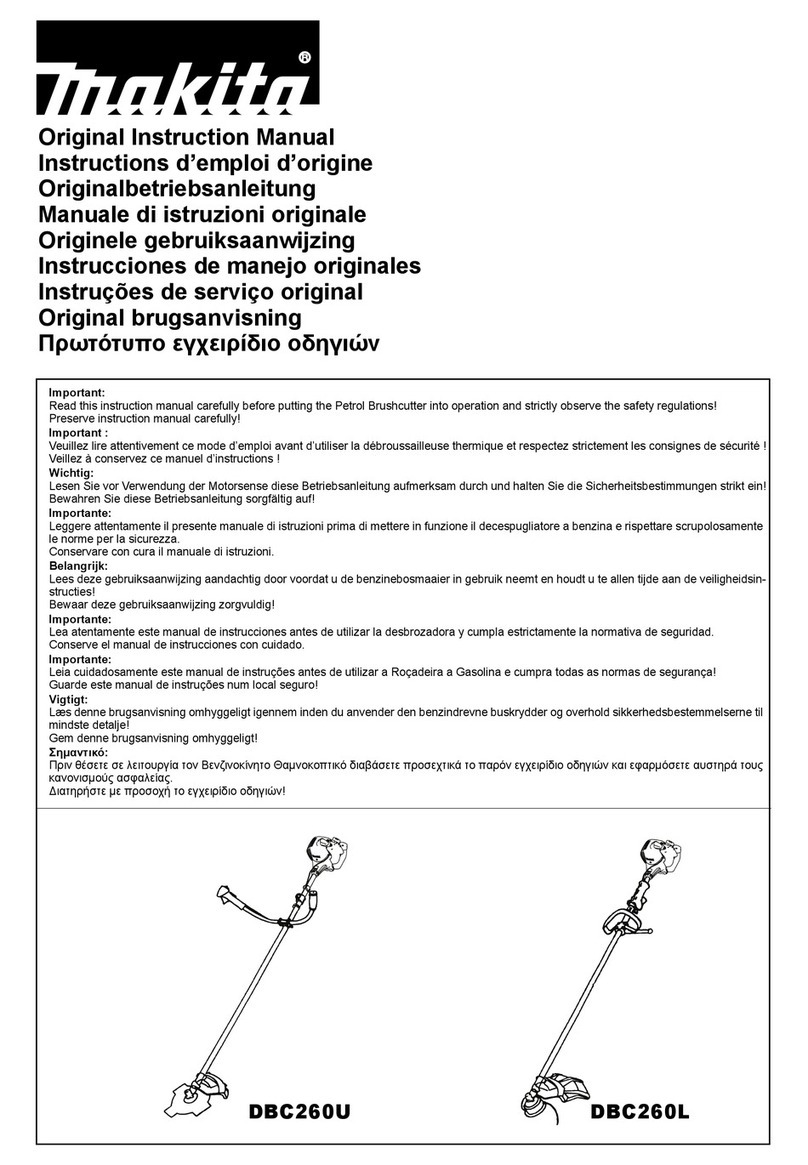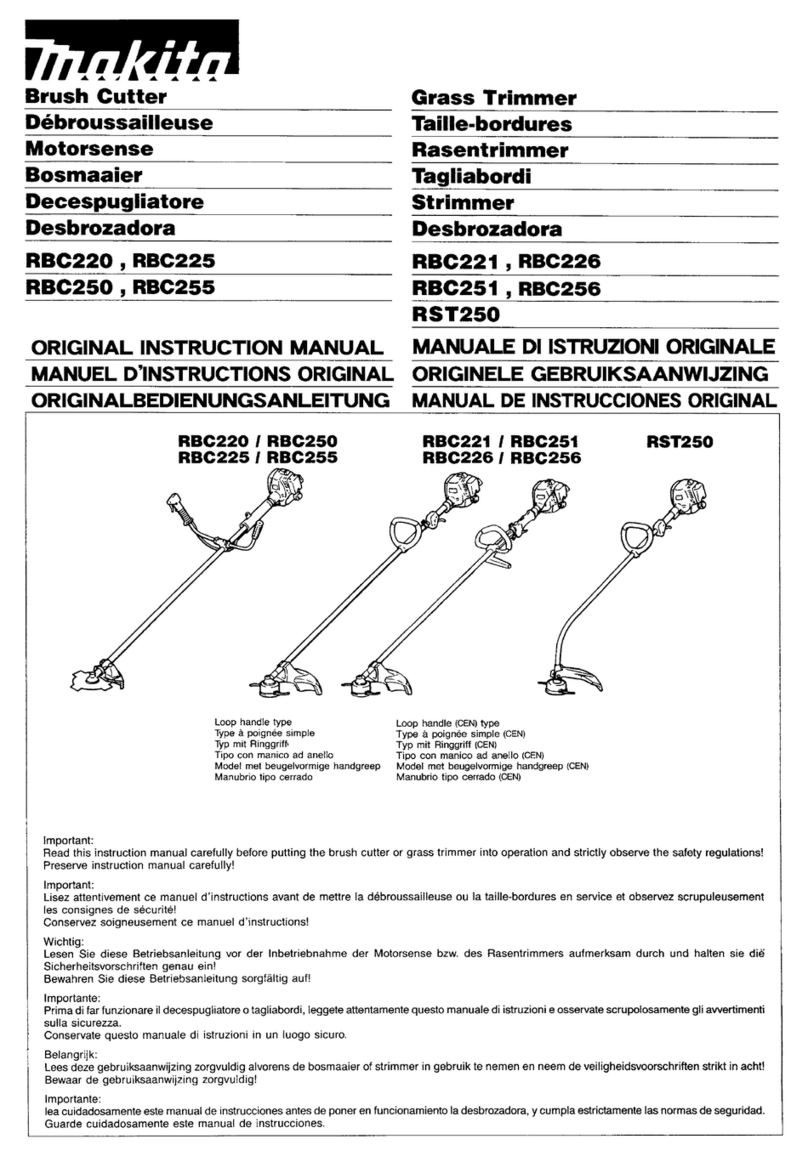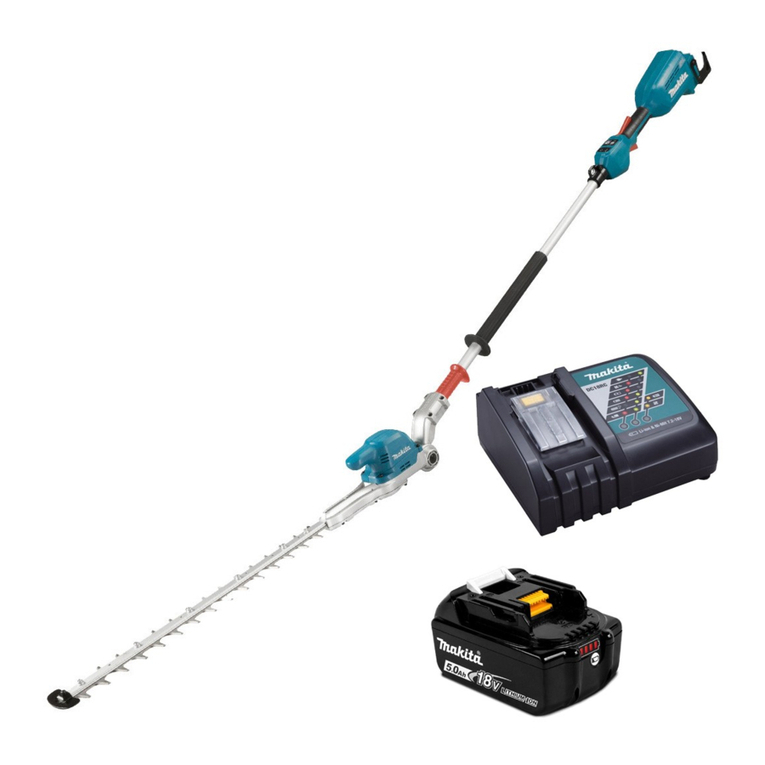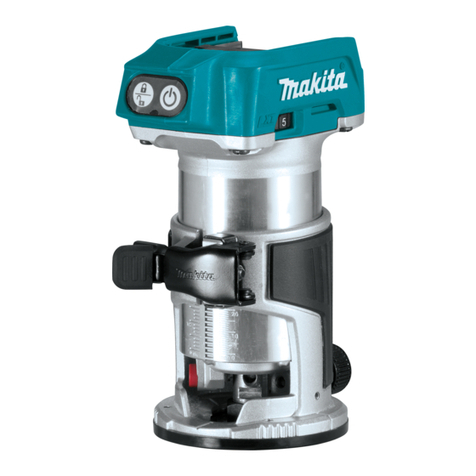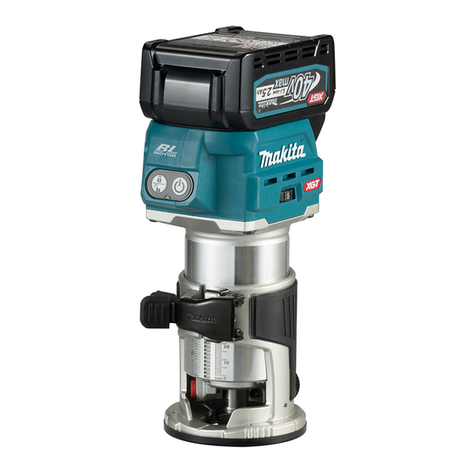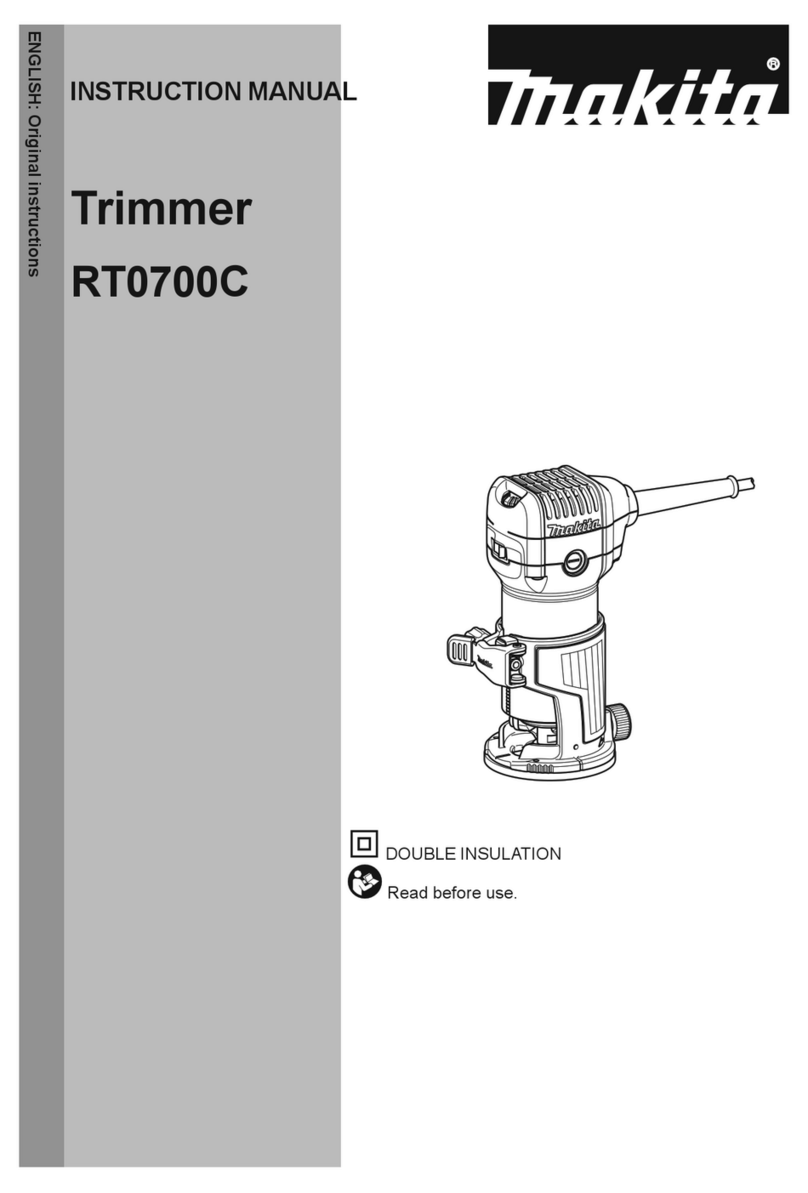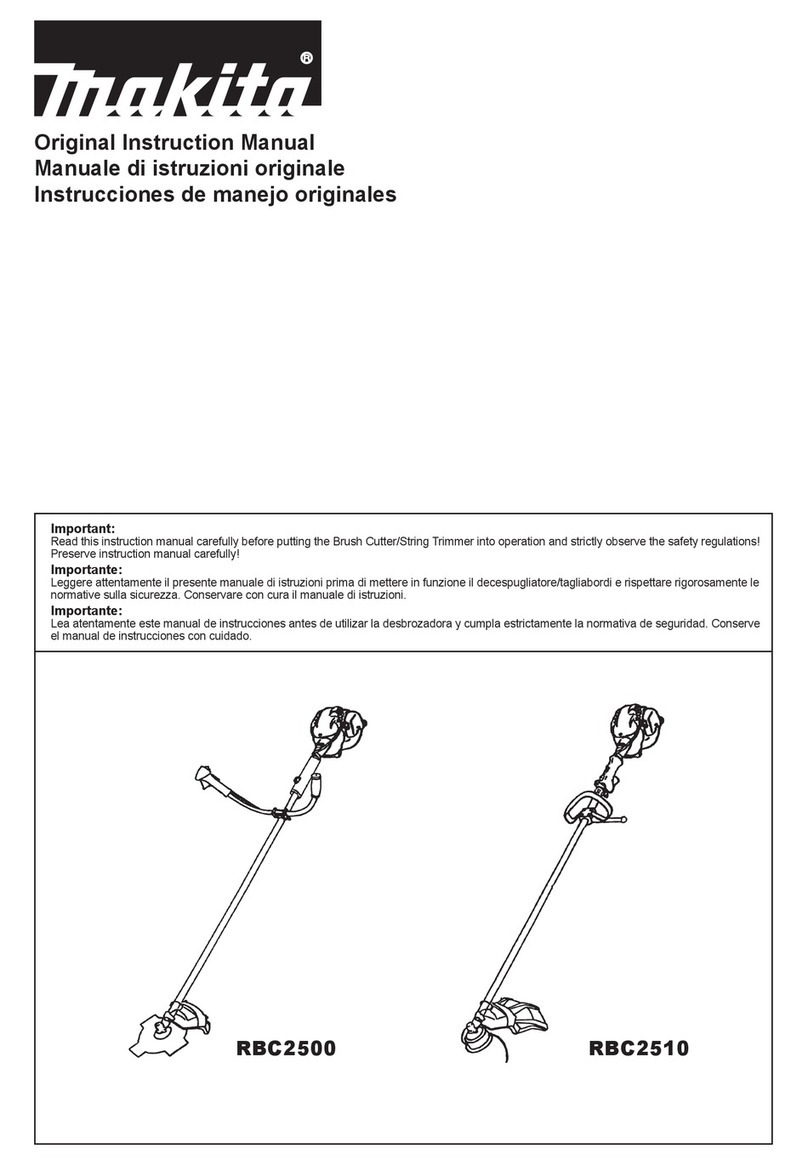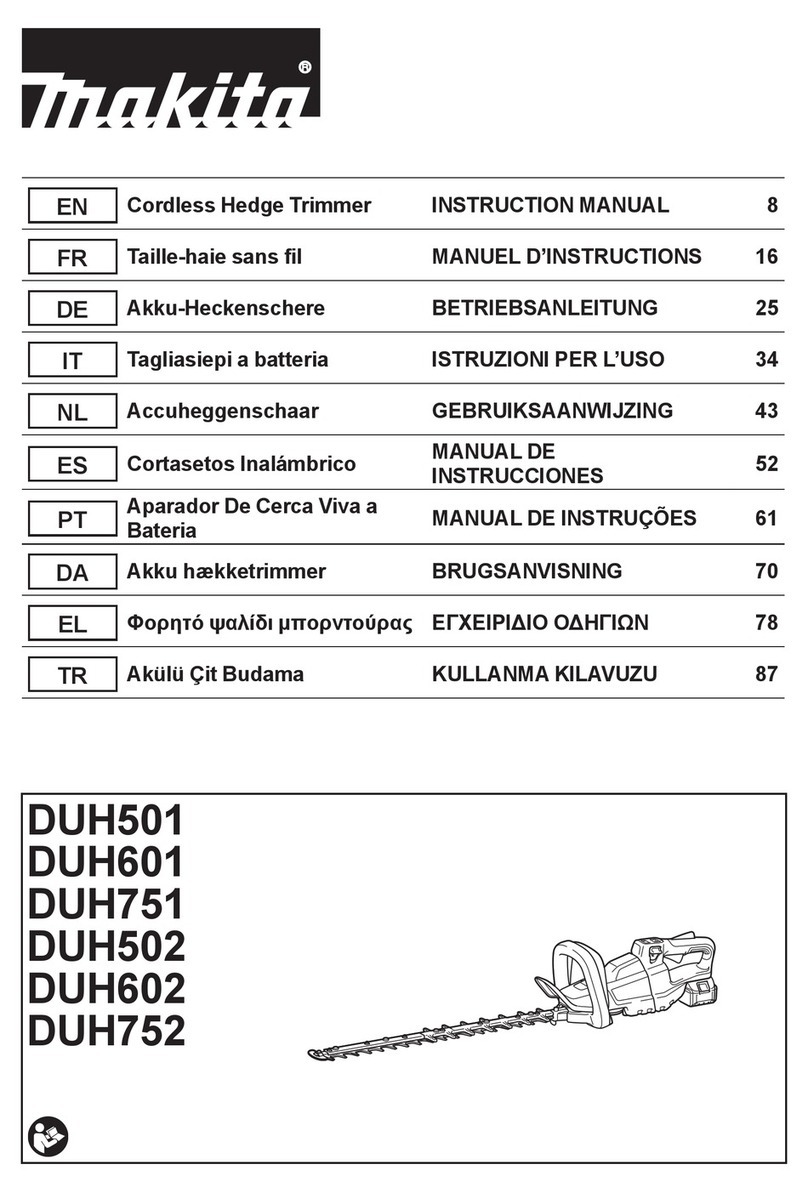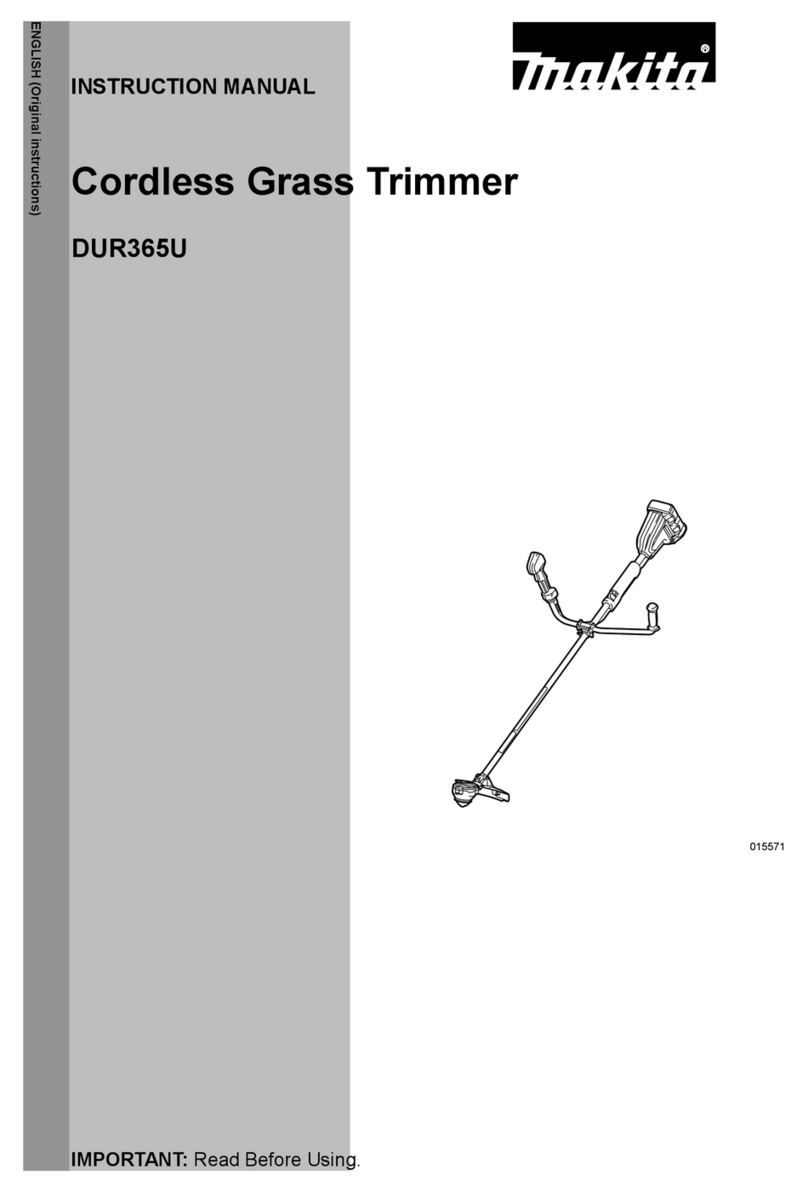4ENGLISH
6. Keep cutting tools sharp and clean. Properly
maintained cutting tools with sharp cutting edges
are less likely to bind and are easier to control.
7. Use the power tool, accessories and tool bits
etc. in accordance with these instructions, tak-
ing into account the working conditions and
the work to be performed. Use of the power tool
for operations different from those intended could
result in a hazardous situation.
8.
Keep handles and grasping surfaces dry, clean
and free from oil and grease. Slippery handles and
grasping surfaces do not allow for safe handling and
9.
which may be entangled.
Battery tool use and care
1.
the manufacturer.
when used with another battery pack.
2. -
nated battery packs. Use of any other battery
3. When battery pack is not in use, keep it away
coins, keys, nails, screws or other small metal
terminal to another. Shorting the battery termi-
4.
-
eyes, additionally seek medical help.
from the battery may cause irritation or burns.
5. Do not use a battery pack or tool that is dam-
6.
-
7. Follow all charging instructions and do not
charge the battery pack or tool outside the
-
tions. Charging improperly or at temperatures
1.
repair person using only identical replacement
parts.
tool is maintained.
2. Service
of battery packs should only be performed by the
manufacturer or authorized service providers.
3. Follow instruction for lubricating and chang-
ing accessories.
Cordless trimmer safety warnings
1.
Hold power tool by insulated gripping surfaces,
because the cutter may contact hidden wiring.
of the power tool "live" and shock the operator.
2. Use clamps or another practical way to secure
and support the workpiece to a stable plat-
form. Holding the work by your hand or against
the body leaves it unstable and may lead to loss of
control.
3. Wear hearing protection during extended
period of operation.
4.
5. Check the trimmer bit carefully for cracks or
damage before operation. Replace cracked or
damaged bit immediately.
6.
nails from the workpiece before operation.
7.
8. Keep hands away from rotating parts.
9. Make sure the trimmer bit is not contacting the
workpiece before the switch is turned on.
10. Before using the tool on an actual workpiece,
wobbling that could indicate improperly
installed bit.
11. Be careful of the trimmer bit rotating direction
and the feed direction.
12.
only when hand-held.
13. Always switch off and wait for the trimmer bit
the tool from workpiece.
14. Do not touch the trimmer bit immediately after
operation; it may be extremely hot and could
burn your skin.
15. Do not smear the tool base carelessly with
thinner, gasoline, oil or the like. They may
cause cracks in the tool base.
16. Use trimmer bits of the correct shank diameter
suitable for the speed of the tool.
17. Some material contains chemicals which may
-
tion and skin contact. Follow material supplier
safety data.
18. Always use the correct dust mask/respirator
for the material and application you are work-
ing with.
SAVE THESE INSTRUCTIONS.



